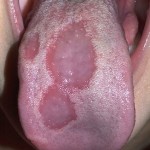
The aims of the study were to determine how frequently oral potentially malignant disorders (OPMDs) transform to cancer and to identify clinical and histological factors determining the rates of transformation.
The study cohort included 1357 patients with biopsy-confirmed OPMDs seen at Guy’s Hospital between 1990 and 1999 and followed up until 2005. The patients’ details were matched to the Thames Cancer Registry (TCR) database and Office for National Statistics (ONS) to identify patients who subsequently developed oral cancer (ICD-10 C00-C06).
Using the patient’s record, their highest grade of dysplasia (none, mild, moderate or severe) was identified, with transformation to oral squamous cell carcinoma being the outcome of principal interest. To avoid co-existing malignancies, follow-up was started 6-months after the date of the index biopsy. Kaplan-Meier estimates and Cox proportional hazard analysis were undertaken to explore the factors associated with the time to transformation to oral cancer.
One thousand three hundred and fifty-seven patients were included in the study. The majority of were women (60.9%), and around 30% were under 47 years of age with lichen planus/lichenoid reaction being the most common OPMD.
They found:-
- Among all OPMDs, 204 (15.1%) had oral epithelial dysplasia (30 severe, 70 moderate and 104 mild).
- Thirty-five patients developed oral cancer over the follow-up period (2.6%).
- There was an association between dysplasia grade and time to transformation.
- Patients with severe dysplasia had a higher risk of transformation to oral cancer [HR 35.4 95% CI (14.2-88.3)] compared to those with no dysplasia.
- This association remained significant although attenuated [HR 21.6 95% CI (5.8-80.5)] following adjustment for sex, age, anatomical site of OPMD and diagnosis. A significant trend over dysplasia grades was evident (P<0.0001).
- Transformation to oral cancer was also associated with increasing age (P=0.0390).
They concluded
In 2.6% of cases, OPMDs transformed to invasive cancer for a total person follow-up time of 12,273 years (mean 9.04 years). The severity of dysplasia is a significant predictor for malignant transformation.
Warnakulasuriya S, Kovacevic T, Madden P, Coupland VH, Sperandio M, Odell E, Møller H. Factors predicting malignant transformation in oral potentially malignant disorders among patients accrued over a 10-year period in South East England. J Oral Pathol Med. 2011 Jul 18. doi:10.1111/j.1600-0714.2011.01054.x.[Epub ahead of print] PubMed PMID: 21762430.
